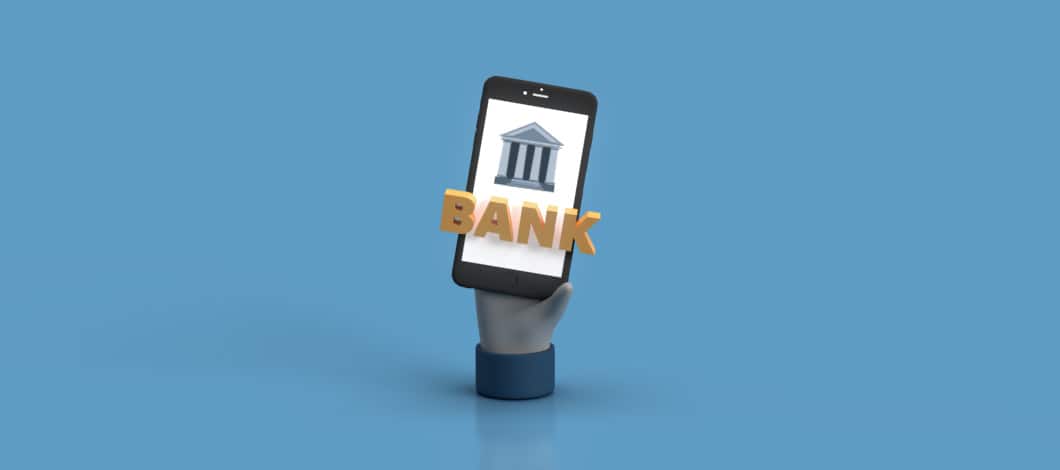What are the best bank alternatives? Today’s technology has opened up a growing range of options for banking customers. Let’s through 12 of the best alternative banking services.
We’ll include digital options as well as alternatives for customers who prefer physical branch locations. We also will cover both options which emphasize basic banking services as well as ones designed for growing your savings and investments.
1. Online Banks
If you’re wondering where to keep money besides bank institutions with a brick-and-mortar presence, one option is online banks.
Online banks are banking institutions that deliver services over the internet to users of mobile devices and other devices. They don’t necessarily have branch locations. Rather, they may be digital-only banks or online divisions of conventional brick-and-mortar banks.
They offer services that can be delivered online, such as checking accounts and savings accounts, but not services that require physical presence, such as cash deposits.
Because online banks don’t have to pay the cost of running branch locations, they often offer higher interest rates for savings accounts. A trade-off is that customer service isn’t available at a physical location.
2. Neobanks
Neobanks use financial technology to deliver digital banking services primarily to mobile users. They offer banking services that can be delivered digitally, including some services not typical of conventional banks and online banks. For example, some neobanks may offer 2-day access to direct deposits or the ability to cash deposits at retail stores.
As with online banks, neobanks lack physical customer service, and their customer service may be slow. Their savings rates often aren’t as high as online banks.

3. Prepaid Debit Card Programs
Prepaid debit cards are cards with secured credit limits. They work similar to credit cards, except that you must deposit funds before you can use them. They may be provided by conventional or online banks or by other organizations such as retailers. For example, Walmart offers a MoneyCard.
Prepaid debit cards are easy to get and use. Unlike credit cards, they don’t normally require credit checks. Some cards may offer perks, such as gas discounts. A downside is that money you put into prepaid debit card accounts doesn’t earn interest like savings accounts do.
4. Credit Unions
For customers looking for alternative ways of banking which have physical branch locations, credit unions are a leading option. Credit unions offer services similar to banks, but they’re owned by account holders and they strive to provide superior customer service through local, personalized attention. They tend to require lower fees and offer higher interest rates than banks.
Historically, credit unions have membership requirements, such as affiliation with a specific school or employer. However, these requirements have been relaxed in recent years, with many credit unions now only requiring residence in a specific geographic area. The U.S. government’s National Credit Union Administration provides online resources to help banking customers locate credit unions.
5. Community Banks
Community banks are financial institutions that serve local customers. They often are locally owned. They provide services similar to larger banks.
Advantages of community banks include better service thanks to local personal presence, lower fees, higher interest rates and more flexible lending policies. On the downside, community banks have smaller cash reserves available for loans and service hours limited to conventional work schedules, often without the technological convenience of online banking.
6. High-Yield Savings Accounts
If you’re looking for high-yield savings alternatives to conventional savings accounts, one option is a high-yield savings account. High-yield savings accounts pay interest at rates significantly higher than regular savings accounts. They may be offered by both online banks and brick-and-mortar banks with online services.
The biggest draw of a high-yield savings account is their high interest. However, interest may vary with market conditions, and your returns may be offset by factors such as inflation. As with regular savings accounts, withdrawals from your account beyond a certain monthly limit may incur fees, and the number of times you can make withdrawals per month may be limited by some institutions. Depending on which provider you use, you may not have access to physical branch locations, and fund transfers may take time.
7. High-Yield Checking Accounts
If you’re seeking savings alternatives, another option to consider is high-yield checking accounts. Unlike conventional checking accounts, high-yield checking accounts offer interest rates comparable to savings accounts, and in some cases higher.
High-yield checking accounts typically have strict requirements, such as electronic statements, direct deposits, minimum balances, minimum monthly deposits and minimum debit transactions. Failing to maintain these requirements can nullify your high interest rates.

8. Money Market Accounts
Money market accounts (MMAs) are savings accounts that include features of checking accounts, such as the ability to write checks and use debit cards. They tend to have higher interest rates than regular savings accounts because they are allowed to make investments unavailable to savings accounts, such as government securities. They may be provided by both conventional and online banks.
The main attraction of MMAs is their high interest rates. However, their rates may be lower than high-yield savings accounts. Other drawbacks can include minimum balances, fees for falling below balance requirements, limited monthly transactions and withdrawal restrictions.
9. Certificates of Deposit
Certificates of deposit (CDs) are similar to savings accounts, but they have a fixed time limit and an interest rate which is usually fixed. CDs usually offer higher interest rates than savings accounts, in return for restrictions on withdrawing deposits before the account maturity date.
The biggest advantage of CDs is their high interest returns. However, their returns may be offset by inflation and tend to yield less than investment vehicles such as stocks. Some investors mitigate this issue by investing in a series of CDs with different maturity dates, a strategy known as investing in CD ladders. Another potential drawback is fees for early withdrawals.
10. Brokerage Accounts
A brokerage account, also known as a securities account, is a type of investment account where investors deposit their money with a licensed brokerage firm. Some brokerage accounts give investors total responsibility for choosing how their money is invested, while others offer investment advice for an additional fee. Online portals for brokerage accounts may offer automated tools to help make investment decisions and monitor returns.
Brokerage accounts can yield higher returns than some of the other savings options covered here. However, they also can carry higher risks, particularly if you try to do your own investing. You can reduce this risk by paying for financial advice, but you’ll pay a higher fee.
11. Cash Management Accounts
Cash management accounts (CMAs) combine features of checking, saving and investment accounts into a single account. You can write checks and your account can earn interest similar to a savings or investment account, without the withdrawal fees typical of those accounts. Some CMAs allow you to choose investment vehicles such as CDs. CMAs typically are offered by providers other than banks and credit unions, such as brokers.
CMAs give you an opportunity to enjoy the benefits of savings and investment accounts without their withdrawal drawbacks. However, their yield may not be as high as some of the other high-yield options covered above. As with other online products, you won’t get in-person customer service.
12. Peer-to-Peer Lending Clubs
Peer-to-peer (P2P) lending clubs are online platforms that match borrowers to investors. They have more relaxed regulatory restrictions than bank lenders, allowing lower interest rates for borrowers while providing lenders with higher returns than they might earn from other savings and investment products.
P2P lending clubs can offer investors higher yields than some other options. A trade-off is that you assume higher risk. P2P loans legally are treated as investments and aren’t covered by the same federal protections as bank loans, so you may lose your investment if the borrower defaults. You also may not earn as much interest if the borrower repays early.
Choose the Best Banking Alternative for You
Today’s banking options include new digital banking technologies such as online banks, neobanks and prepaid card programs as well as alternatives with physical branches such as credit unions and community banks.
When it comes to growing your money, alternatives to conventional savings accounts include high-yield savings and checking accounts, money market accounts, CDs, brokerage accounts, cash management accounts and P2P lending clubs. Each option has its pros, cons and best uses. Choose the alternative banking method which best suits your needs.










